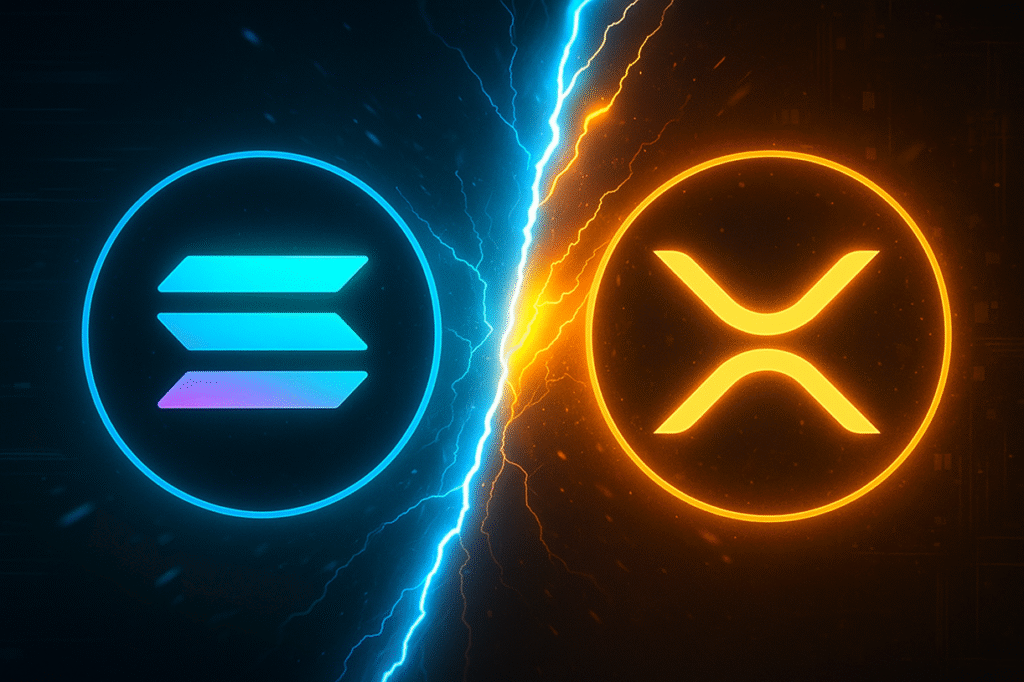In the ever-evolving landscape of digital currencies, conversations around performance and adoption are inevitable. Cryptocurrency enthusiasts and investors are often drawn into debates about which blockchain technology is superior, based on user metrics and transaction volumes. Recently, a lively discussion emerged on social media, where Solana Foundation executive Vibhu Norby challenged supporters of XRP to substantiate their optimism with concrete data rather than optimistic forecasts. Norby, an advocate for data-driven discussions, brought attention to the metrics that show Solana outperforming XRP in many aspects.
Analyzing XRP’s Market Position: A Data-Driven Debate
Comparing Blockchain Activity
Norby highlighted the disparity in active user accounts, noting that the XRP Ledger has seen stagnant growth, maintaining approximately 25,000 daily active accounts over the past three years. In stark contrast, Solana boasts an impressive average of over 2.5 million daily active accounts. This significant difference in user engagement underscores Solana’s rapid adoption and scalability.
The discrepancy extends to transaction volumes as well. With XRP processing about 1 to 1.5 million daily transactions, Solana dwarfs this figure with approximately 100 million transactions per day. Such numbers emphasize Solana’s capacity to handle high volumes of user activity, reflecting its technological advancements and broader acceptance in the cryptocurrency community.
Transfer Volume and Value
Examining the monetary aspect, Norby pointed out that XRP currently handles a monthly transfer volume of $50 to $60 billion. However, Solana’s stablecoin transfers alone reached nearly $2 trillion in October, showcasing its robust ecosystem and extensive adoption beyond traditional cryptocurrencies.
A common argument against these figures is the potential for bot-generated transactions on Solana. Norby contended that both XRPL and Solana have comparably low transaction fees, which should not inherently lead to Solana attracting more bots. The data, he argued, represents genuine user activity and highlights Solana’s measurable advantages.
Debating Cryptocurrency Utility
The conversation evolved to discuss the strategic focus of XRP, which some claim is geared more towards institutional settlement rather than retail use. Despite these assertions, Norby suggested that financial institutions are not slow to adopt new technologies; instead, they are increasingly opting for stablecoins over XRP for settlements, citing Solana’s technological superiority as a key driver.
Additionally, Norby addressed the misconception that RippleNet’s progress correlates with on-chain success. RippleNet can function independently of XRP, unless specific features like On-Demand Liquidity are utilized, highlighting a clear distinction between enterprise solutions and blockchain adoption.
Future Prospects for XRP
Though he presented a critical view of XRP’s current market position, Norby acknowledged that there is potential for XRP to succeed in the future. However, he cautioned investors to critically assess the viability of holding XRP as an investment given the current landscape.
“`html
Is Solana more technologically advanced than XRP?
Solana is recognized for its high throughput and low transaction costs, which many argue make it technologically superior to XRP. However, each blockchain serves distinct purposes, with Solana catering to a broader range of applications and XRP focusing on financial institutions.
Why does Solana have more daily active users than XRP?
Solana’s infrastructure supports a wide array of decentralized applications, attracting a diverse user base, while XRP is primarily aimed at institutional settlements, which naturally limits its daily user activity.
What are the implications of XRP’s current market performance?
XRP’s stagnant user growth and transaction volume, compared to Solana’s rapid increase, suggest challenges in adoption and scalability. Investors should consider these factors alongside market trends and technological advancements when evaluating their investment strategies.
Could XRP re-emerge as a market leader?
While current metrics appear unfavorable, XRP’s focus on institutional partnerships and potential regulatory developments could pave the way for a resurgence, provided it can capitalize on these opportunities effectively.
“`
This comprehensive guide delves into the nuances of XRP’s technology, market position, and future potential. By exploring both the data and broader market context, this piece offers valuable insights to aid informed investment decisions in the dynamic world of cryptocurrencies.

